Entrepreneurship, Innovation und Produktivitätswachstum
Diese Gruppe befasst sich mit Forschungsthemen, die für unser Verständnis von Innovationsmustern und Produktivitätswachstum von Bedeutung sind, und untersucht die Auswirkungen auf Arbeitnehmer und Unternehmen. Zu den Schwerpunkten gehören der Rückgang der Unternehmensdynamik, die Zunahme der Automatisierung, Entrepreneurship und Innovation sowie Lieferketten.
Forschungscluster
Produktivität und InstitutionenIhr Kontakt

Mitglied - Abteilung Strukturwandel und Produktivität
Referierte Publikationen
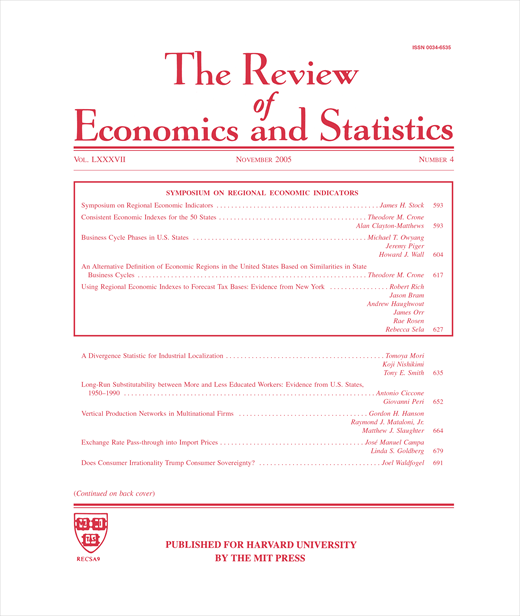
Who Creates Jobs? Small versus Large versus Young
in: Review of Economics and Statistics, Nr. 2, 2013
Abstract
The view that small businesses create the most jobs remains appealing to policymakers and small business advocates. Using data from the Census Bureau's Business Dynamics Statistics and Longitudinal Business Database, we explore the many issues at the core of this ongoing debate. We find that the relationship between firm size and employment growth is sensitive to these issues. However, our main finding is that once we control for firm age, there is no systematic relationship between firm size and growth. Our findings highlight the important role of business start-ups and young businesses in U.S. job creation.
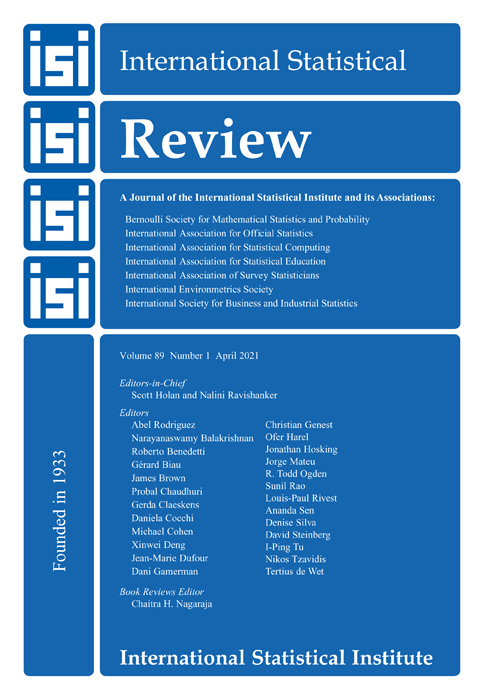
Towards Unrestricted Public Use Business Microdata: The Synthetic Longitudinal Business Database
in: International Statistical Review, Nr. 3, 2011
Abstract
In most countries, national statistical agencies do not release establishment-level business microdata, because doing so represents too large a risk to establishments’ confidentiality. One approach with the potential for overcoming these risks is to release synthetic data; that is, the released establishment data are simulated from statistical models designed to mimic the distributions of the underlying real microdata. In this article, we describe an application of this strategy to create a public use file for the Longitudinal Business Database, an annual economic census of establishments in the United States comprising more than 20 million records dating back to 1976. The U.S. Bureau of the Census and the Internal Revenue Service recently approved the release of these synthetic microdata for public use, making the synthetic Longitudinal Business Database the first-ever business microdata set publicly released in the United States. We describe how we created the synthetic data, evaluated analytical validity, and assessed disclosure risk.
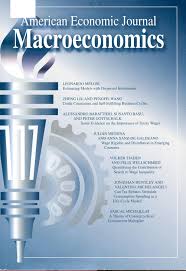
Business Volatility, Job Destruction, and Unemployment
in: American Economic Journal: Macroeconomics, Nr. 2, 2010
Abstract
Unemployment inflows fell from 4 percent of employment per month in the early 1980s to 2 percent by the mid 1990s. Using low frequency movements in industry-level data, we estimate that a 1 percentage point drop in the quarterly job destruction rate lowers the monthly unemployment inflow rate by 0.28 points. By our estimates, declines in job destruction intensity account for 28 (55) percent of the fall in unemployment inflows from 1982 (1990) to 2005. Slower job destruction accounts for similar fractions of long-term declines in the rate of unemployment.
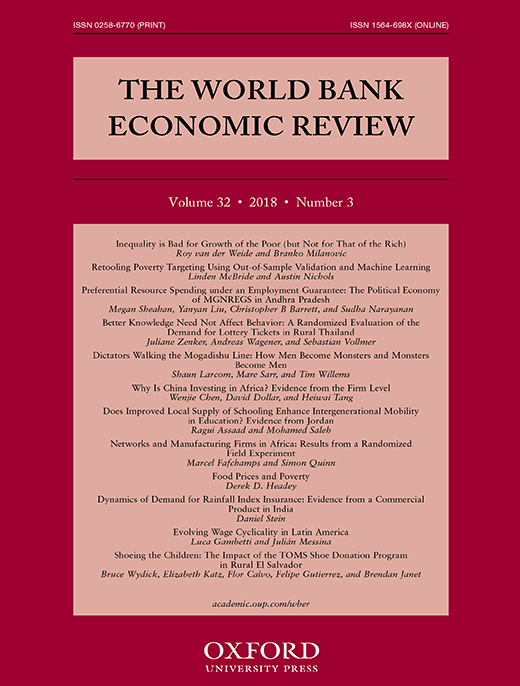
Labor Market Analysis and Public Policy: The Case of Morocco
in: World Bank Economic Review, Nr. 3, 1999
Abstract
This article uses detailed industry and household data to understand why Morocco's labor market performed poorly in 1985–95. The data indicate that marked structural changes and weak demand in the product market were responsible. This article makes two contributions to the literature. The first is specific: it underscores that the demand for labor is a derived demand and that the performance of the product market is an important determinant of the performance of the labor market. The second is more general: it demonstrates that this kind of microeconomic analysis, using data sets that are often available in developing countries, can inform policy design.
Arbeitspapiere
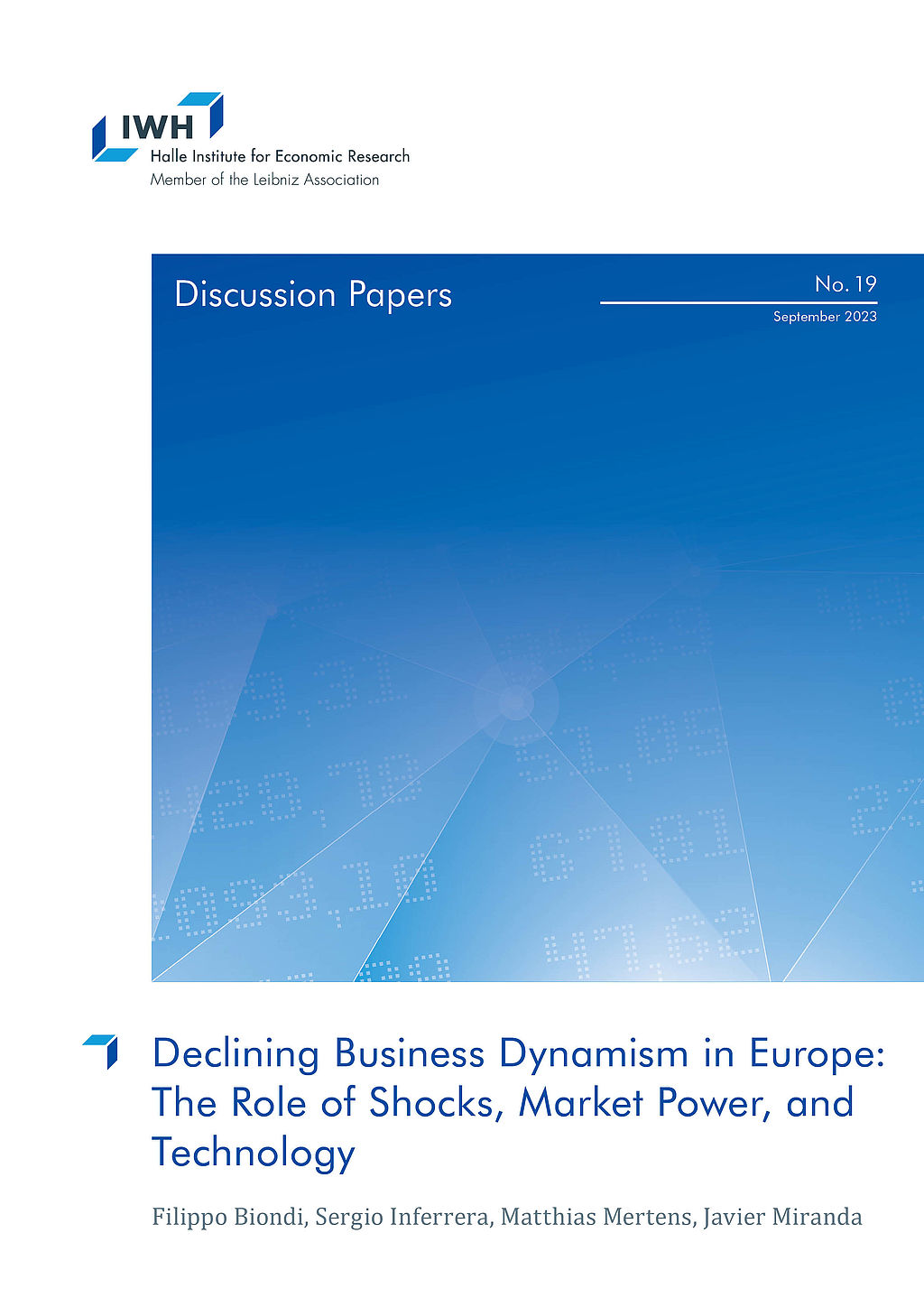
Declining Business Dynamism in Europe: The Role of Shocks, Market Power, and Technology
in: IWH Discussion Papers, Nr. 19, 2023
Abstract
We study changes in business dynamism in Europe after 2000 using novel micro-aggregated data that we collected for 19 European countries. In all countries, we document a broad-based decline in job reallocation rates that concerns most economic sectors and size classes. This decline is mainly driven by dynamics within sectors, size, and age classes rather than by compositional changes. Large and mature firms experience the strongest decline in job reallocation rates. Simultaneously, the employment shares of young firms decline. Consistent with US evidence, firms’ employment has become less responsive to productivity shocks. However, the dispersion of firms’ productivity shocks has decreased too. To enhance our understanding of these patterns, we derive and apply a novel firm-level framework that relates changes in firms’ sales, market power, wages, and production technology to firms’ responsiveness and job reallocation.
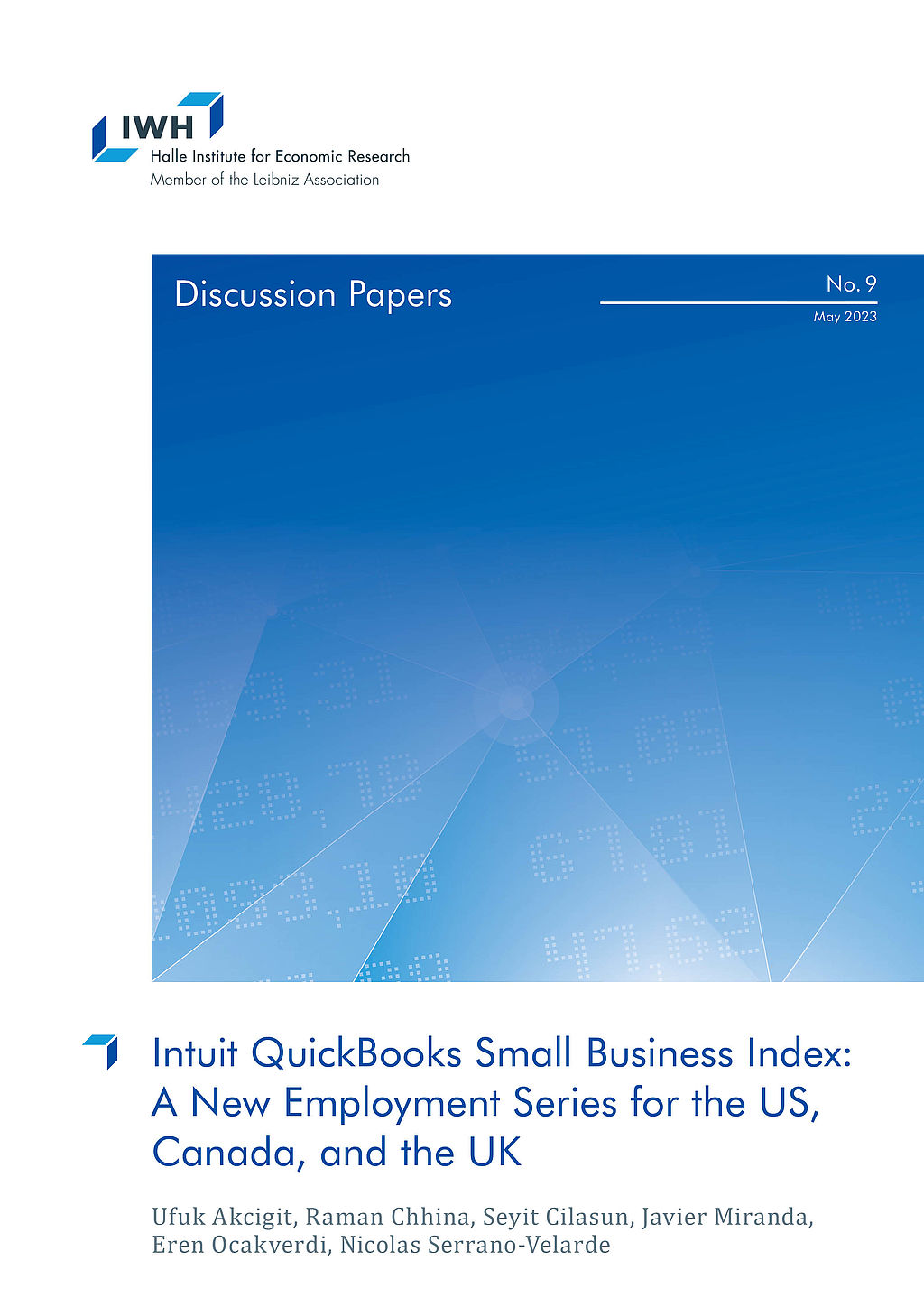
Intuit QuickBooks Small Business Index: A New Employment Series for the US, Canada, and the UK
in: IWH Discussion Papers, Nr. 9, 2023
Abstract
Small and young businesses are essential for job creation, innovation, and economic growth. Even most of the superstar firms start their business life small and then grow over time. Small firms have less internal resources, which makes them more fragile and sensitive to macroeconomic conditions. This suggests the need for frequent and real-time monitoring of the small business sector’s health. Previously this was difficult due to a lack of appropriate data. This paper fills this important gap by developing a new Intuit QuickBooks Small Business Index that focuses on the smallest of small businesses with at most 9 workers in the US and the UK and at most 19 workers in Canada. The Index aggregates a sample of anonymous Quick- Books Online Payroll subscriber data (QBO Payroll sample) from 333,000 businesses in the US, 66,000 in Canada, and 25,000 in the UK. After comparing the QBO Payroll sample data to the official statistics, we remove the seasonal components and use a Flexible Least Squares method to calibrate the QBO Payroll sample data against official statistics. Finally, we use the estimated model and the QBO Payroll sample data to generate a near real-time index of economic activity. We show that the estimated model performs well both in-sample and out-of-sample. Additionally, we use this analysis for different regions and industries. Keywords:
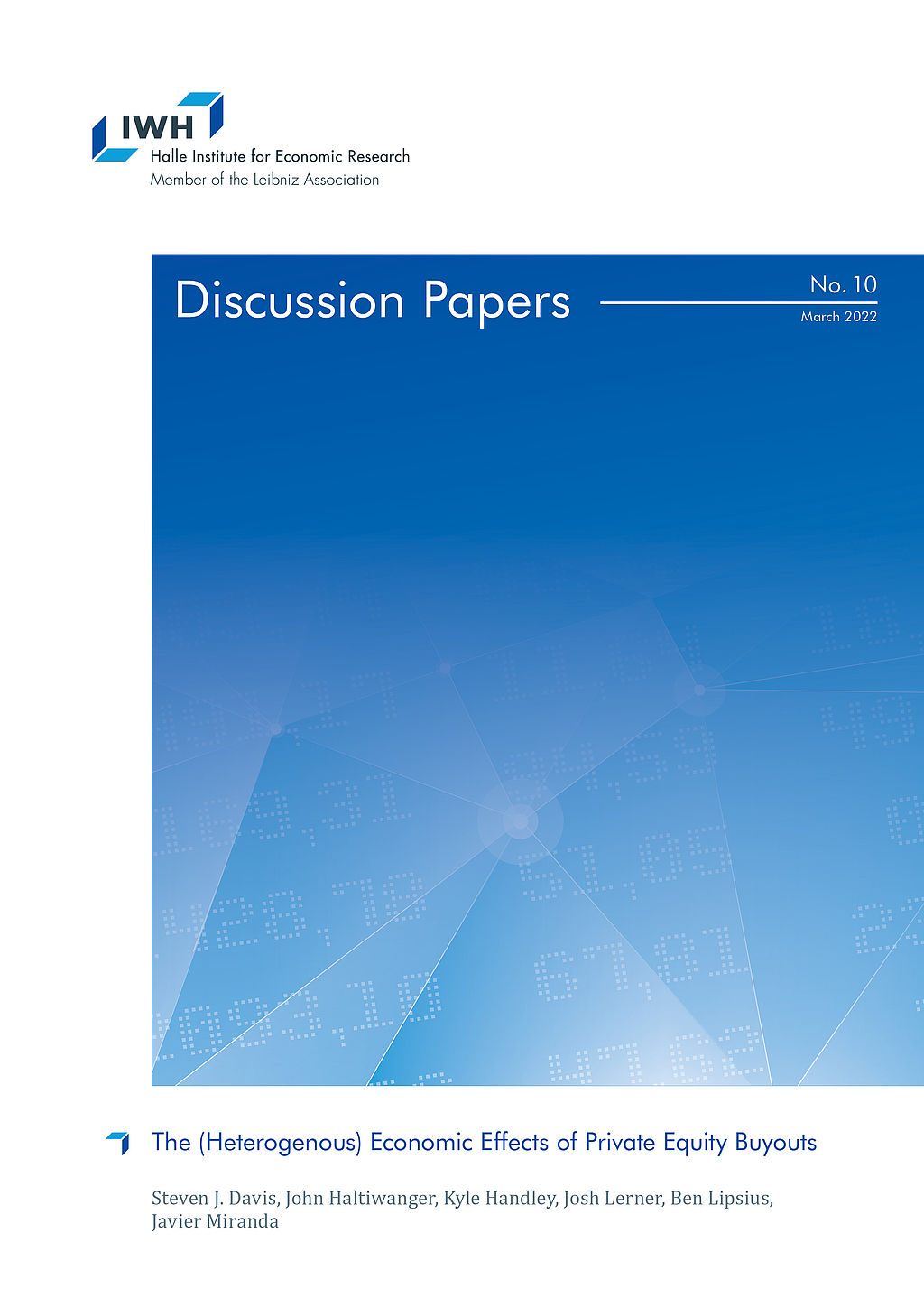
The (Heterogenous) Economic Effects of Private Equity Buyouts
in: IWH Discussion Papers, Nr. 10, 2022
Abstract
The effects of private equity buyouts on employment, productivity, and job reallocation vary tremendously with macroeconomic and credit conditions, across private equity groups, and by type of buyout. We reach this conclusion by examining the most extensive database of U.S. buyouts ever compiled, encompassing thousands of buyout targets from 1980 to 2013 and millions of control firms. Employment shrinks 13% over two years after buyouts of publicly listed firms – on average, and relative to control firms – but expands 13% after buyouts of privately held firms. Post-buyout productivity gains at target firms are large on average and much larger yet for deals executed amidst tight credit conditions. A post-buyout tightening of credit conditions or slowing of GDP growth curtails employment growth and intra-firm job reallocation at target firms. We also show that buyout effects differ across the private equity groups that sponsor buyouts, and these differences persist over time at the group level. Rapid upscaling in deal flow at the group level brings lower employment growth at target firms.

Measuring the Impact of Household Innovation using Administrative Data
in: NBER Working Paper, Nr. 25259, 2018
Abstract
We link USPTO patent data to U.S. Census Bureau administrative records on individuals and firms. The combined dataset provides us with a directory of patenting household inventors as well as a time-series directory of self-employed businesses tied to household innovations. We describe the characteristics of household inventors by race, age, gender and U.S. origin, as well as the types of patented innovations pursued by these inventors. Business data allows us to highlight how patents shape the early life-cycle dynamics of nonemployer businesses. We find household innovators are disproportionately U.S. born, white and their age distribution has thicker tails relative to business innovators. Data shows there is a deficit of female and black inventors. Household inventors tend to work in consumer product areas compared to traditional business patents. While patented household innovations do not have the same impact of business innovations their uniqueness and impact remains surprisingly high. Back of the envelope calculations suggest patented household innovations granted between 2000 and 2011 might generate $5.0B in revenue (2000 dollars).

Development of Survey Questions on Robotics Expenditures and Use in U.S. Manufacturing Establishments
in: Center for Economic Studies (CES) Working Paper Series, Nr. 44, 2018
Abstract
The U.S. Census Bureau in partnership with a team of external researchers developed a series of questions on the use of robotics in U.S. manufacturing establishments. The questions include: (1) capital expenditures for new and used industrial robotic equipment in 2018, (2) number of industrial robots in operation in 2018, and (3) number of industrial robots purchased in 2018. These questions are to be included in the 2018 Annual Survey of Manufactures. This paper documents the background and cognitive testing process used for the development of these questions.













